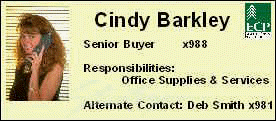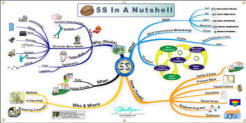Visual Control
5S & Visual Control
 |
Indicator |
Signal
|
Control
|
Visual Control provides information to guide everyday actions. Traffic signals and signs are the most common examples. It is a powerful tool for enabling good decision-making at the micro level. The table below summarizes different types of visual control and gives examples. Visual control is a natural partner of 5S and is used in boundaries and many other ways to ensure that tools get replaced, that people follow safe practices and that quality checks are done.
Indicator
| Power | Description | Examples |
Low |
An indicator only provides information about the immediate environment or situation. Indicators are passive and people may not notice them or respond to them. |
-Street Signs -Level Indicators -Auto Fuel Gauge -Aisle Markings |
Signal
| Power | Description | Examples |
Medium |
Signals grab attention with visual (or audible) alarms. People may still choose to ignore signals but they usually perceive them. |
-Traffic Lights |
Control
| Power | Description | Examples |
High |
Controls limit behavior through strong visual messages or physical restrictions as an action takes place. |
-Traffic Gates |
Addresses & Nameplates

Addresses and nameplates are helpful in any organization but especially so in large firms. This simple nameplate gives basic information: Cindy Works Here.

A complete nameplate has a phone number if Cindy is away; a photo so a new visitor may recognize her; responsibilities so they know if they have the right person; an alternate contact if Cindy is unavailable.
Giant Banner For Shop or Classroom
■ ■ ■ ■ ■ ■ ■



